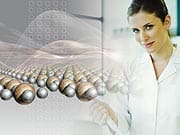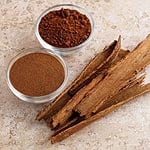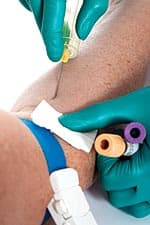Life Extension Magazine®
| As you will learn in the next issue of Life Extension Magazine®, even slightly elevated blood sugar levels pose a serious threat to your health! When we say “slightly elevated,” we’re not talking about glucose ranges the medical establishment accepts as “normal.” Instead we are referring to startling scientific findings proving that fasting glucose levels above 80-85 mg/dL create many of the same problems suffered by diabetics, only at a slower rate. In other words, glucose levels that today’s doctors consider to be safe are in reality dangerously high and are silently killing countless numbers of Americans. Recognizing that most aging people suffer from glucose-related pathologies, Life Extension made radical recommendations this year to suppress blood sugar, such as suggesting that members ask their doctors to consider prescribing the anti-diabetic drug metformin—whether or not they are diabetic. The Calorie Control Weight Management formula was introduced three months ago to enable members to reduce the glucose burden endured by the aging body after eating. In response to challenges members may still confront in achieving optimal glucose readings (around 80 mg/dL), novel natural ingredients have been identified that enable people to more efficiently utilize absorbed glucose, thus quickly reducing its toxic level in the blood. Glucose-Lowering Power of Novel Cinnamon Extract
You won’t hear this from the FDA or the drug companies, but the US Department of Agriculture (USDA) has been studying the effect of cinnamon on blood glucose for over a decade.1,2 USDA scientists have identified unique compounds in cinnamon bark that increase in vitro sugar metabolism “20-fold.” According to one government expert, “These polyphenolic polymers found in cinnamon may function as antioxidants, potentiate insulin action, and may be beneficial in the control of glucose intolerance and diabetes.”3 Cinnamon is rich in bioactive compounds that help regulate blood sugar levels. This isn’t the cinnamon you’d use to flavor your cappuccino, by the way. It’s a related species called Cinnamomum cassia—and scientists around the world are now discovering its glucose-lowering power.4-7 Extract of this form of cinnamon triggers cell signaling proteins inside the pancreas, bringing the secretion and regulation of insulin levels into greater balance. This helps to restore your body’s natural ability to control blood sugar as you age. Cinnamon acts as an insulin sensitizer, triggering proteins that lower insulin resistance at the cellular level.7 It has also been shown to thwart advanced glycation end products (AGEs) which are implicated in diabetic complications, atherosclerosis, and Alzheimer’s disease.8,9 A recent in vivo study found cinnamon accomplishes this anti-glycation effect in part through its antioxidant scavenging capabilities.9
Cinnamon also triggers genes in muscle and fatty tissue that transfer glucose out of the bloodstream and into energy producing cells, effectively lowering blood glucose. This quenches the highly reactive oxidant and inflammatory inferno in your body stoked by chronic glucose overexposure. An abundance of animal studies published in 201010-13 confirm that cinnamon polyphenols can significantly reduce fasting glucose levels, improve pancreatic function, and enhance insulin sensitivity—even in diabetic models. In one recent study, researchers examined the effect of cinnamon extract on mice that were divided into a control diabetic group and cinnamon extract-treated group.13 For 12 weeks, the researchers measured blood glucose and other markers of diabetes. They found fasting blood glucose and two hour postprandial (after-meal) blood glucose levels in the cinnamon-treated group were significantly lower than those in the control group. These findings led the researchers to conclude: “Our results suggest that cinnamon extract significantly increases insulin sensitivity, reduces serum, and hepatic lipids, and improves hyperglycemia and hyperlipidemia.”13 In humans, the literature is similarly rich with data underscoring cinnamon’s potent, multimodal effects. Researchers have documented compelling results for those afflicted with metabolic syndrome, type 2 diabetes, and polycystic ovary syndrome (a known causative factor in insulin resistance, obesity, and diabetes in women).14 In controlled human studies in these populations, cinnamon extracts have been shown to induce profoundly beneficial, broad-spectrum effects on markers of glucose tolerance across the board.14 They improve blood sugar levels, insulin sensitivity, cholesterol and antioxidant status, blood pressure, lean body mass, and gastric emptying.14 Clinicians examining cinnamon’s therapeutic potential in diabetic individuals have reported declines in fasting blood glucose anywhere between 10-29%.15,16 Use Only Standardized Cinnamon Extract
The problem with long-term cinnamon use is the presence of highly reactive aldehyde compounds. These toxic fat-soluble compounds accumulate in the body over time. The good news is that a novel aqueous extract of cinnamon has been identified and through a patented process, it delivers cinnamon’s beneficial water-soluble nutrients while removing deleterious fat-soluble toxins. In a recent double-blind, placebo-controlled trial,17 a group of individuals (average age 61) with high blood sugar taking 500 mg per day of this form of cinnamon extract experienced an average decline of 12 mg/dL in fasting blood glucose after just two months. It also produced a significant decrease in postprandial glucose spikes (by an average of 32 mg/dL) after ingestion of 75 g of carbohydrates. These findings support previous clinical data on similar aqueous cinnamon extracts, in which diabetic patients saw their fasting glucose drop an average of 10.3% after four months.16 Most importantly, no adverse effects were observed in either study. “Our results suggest that cinnamon extract significantly increases insulin sensitivity, reduces serum, and hepatic lipids, and improves hyperglycemia and hyperlipidemia.”
What These Results Translate IntoA report in one of the American Diabetes Association’s own journals found that fasting glucose levels above 85 mg/dL in “nondiabetic apparently healthy middle-aged men” was a primary predictor of cardiovascular death. This was true regardless of exercise and cholesterol levels, in smokers and non-smokers alike.18 Aging non-diabetic individuals typically have fasting glucose readings far over 90 mg/dL. By using this novel cinnamon extract alone, one may be able to reduce their fasting glucose to safer ranges of around 80 mg/dL. You’ll learn later in this article about the importance of reducing after-meal (postprandial) glucose spikes, something that cinnamon is quite effective in doing. New Chromium Complex Optimizes Glucose BreakdownChromium has long been known to play a central role in healthy glucose metabolism at the cellular level.19-23 It sensitizes cells to insulin and increases the number of insulin receptors in cells. Studies definitively link low chromium levels with increased blood glucose, triglycerides, and cholesterol, increasing the possibility of diabetes and heart disease.24,25 As with any strategy to lower cardiac risk factors, regular blood tests can verify whether the approaches you choose are working for you.
Chromium works by interacting with cell-signaling receptors that enhance the body’s response to insulin. In the presence of chromium cells require less insulin to become activated, resulting in greater overall insulin sensitivity and enhanced glucose control. Chromium also aids in the transfer of glucose from the blood into cells by activating insulin-sensitive glucose transport molecules. Its central role in regulating glucose is underscored by the hallmark signs of chromium deficiency which manifest as elevated fasting glucose and insulin blood levels.
Some chromium-deficient patients have even developed diabetes that could not be reversed through insulin injections, but subsided when supplemented with chromium.26 The body absorbs dietary chromium poorly, highlighting the need for supplementation.27 The exciting news is a cutting-edge chromium compound has emerged that supplies chromium—complemented by standardized extract of the Indian gooseberry and the adaptogen known as shilajit. Indian gooseberry (Emblica officinalis) has been shown in human clinical trials to improve endothelial function28,29 and lipid profiles,30-33 including triglycerides formed by excess glucose in the blood. Shilajit helps optimize blood glucose levels.34,35 It also supports energy production, which is compromised in individuals suffering from glucose impairment.35 The phenolic compounds and organic acids in shilajit and Indian gooseberry also act to shield chromium from oxidative destruction in the body, stabilizing its structure and enhancing bioavailability.36 In a randomized clinical trial of 150 individuals with type 2 diabetes,36 200 mcg twice per day of this novel chromium compound in addition to standard medication induced a greater reduction in fasting blood glucose than placebo (14.6% on average) and lowered postprandial blood glucose (14.2%) after just two months.36 What These Results Translate IntoFor someone with a fasting glucose level of 100 mg/dL, the use of this new chromium complex alone may reduce levels to around 86—a far safer range. Combining this chromium complex with water-soluble cinnamon extract could slash fasting glucose to below 80. Impede Sugar AbsorptionGlucose is formed primarily from carbohydrates you eat. Inhibiting carbohydrate digestive enzymes is a proven method to reduce blood glucose levels.
Extracts of brown seaweed and bladderwrack are known to inhibit the action of amylase and glucosidase, digestive enzymes that facilitate the breakdown of starches into sugars for absorption into the bloodstream.37,38 When given to animals, a proprietary compound of these extracts reduced postprandial glucose by 90%.39 In a recent double-blind, placebo-controlled clinical trial, a single dose of 500 mg per day of this same compound significantly increased insulin sensitivity while inducing a 48.3% decline in postprandial (after-meal) glucose levels in healthy individuals.40 By working on multiple pathways, using innovative natural substances, individuals can help mitigate the factors of insulin insensitivity that often results from aging. What These Results Translate IntoOptimal glucose control involves both keeping fasting glucose around 80 and not allowing postprandial (after-meal) glucose to go spike any higher than 40. This means that if your fasting glucose is 82, it should not go any higher than 122 (which can be measured by a finger test of your blood within two hours of eating). By taking brown seaweed and bladderwrack extract before meals, a postprandial spike that would normally go to 160 may be reduced to only 122. SummaryEven modestly elevated fasting glucose (above 85 mg/dL) has been shown to be an independent predictor of cardiac death. This underscores the need for aging humans to pursue safe, effective, natural strategies to bring blood sugar under control. Cutting-edge researchers have uncovered novel interventions in the form of a unique, water-soluble extract of cinnamon, a patented chromium compound, and purified nutrients obtained from seaweed and bladderwrack. They have been shown to increase insulin sensitivity, boost your cells’ ability to convert glucose into energy, and block sugar absorption—for lifelong glucose control. Those with fasting glucose above 80-85 mg/dL should take these nutrients before every meal, especially those high in carbohydrates. As with any strategy to lower cardiac risk factors, regular blood tests can verify whether the approaches you choose are working for you. If you have any questions on the scientific content of this article, please call a Life Extension® Health Advisor at | |||||
| References | |||||
| 1. Broadhurst L, Polansky MM, Anderson, RA. Insulin-like biological activity of culinary and medicinal plant aqueous extracts in vitro. J Agric Food Chem. 2000 Mar; 48(3):849–52. 2. Cao H, Graves DJ, Anderson RA. Cinnamon extract regulates glucose transporter and insulin-signaling gene expression in mouse adipocytes. Phytomedicine. 2010 May 27. 3. Anderson RA, Broadhurst CL, Polansky MM, et al. Isolation and characterization of polyphenol type-A polymers from cinnamon with insulin-like biological activity. J Agric Food Chem. 2004 Jan 14;52(1):65-70 4. Yu YB, Dosanjh L, Lao L, Tan M, Shim BS, Luo Y. Cinnamomum cassia bark in two herbal formulas increases life span in Caenorhabditis elegans via insulin signaling and stress response pathways. PLoS One. 2010 Feb 22;5(2):e9339 5. Imparl-Radosevich J, Deas S, Polansky MM, et al. Regulation of PTP-1 and insulin receptor kinase by fractions from cinnamon: implications for cinnamon regulation of insulin signaling. Horm Res. 1998 Sep;50(3):177-82. 6. Qin B, Nagasaki M, Ren M, Bajotto G, Oshida Y, Sato Y. Cinnamon extract (traditional herb) potentiates in vivo insulin-regulated glucose utilization via enhancing insulin signaling in rats. Diabetes Res Clin Pract. 2003 Dec;62(3):139-48. 7. Qin B, Nagasaki M, Ren M, Bajotto G, Oshida Y, Sato Y. Cinnamon extract prevents the insulin resistance induced by a high-fructose diet. Horm Metab Res. 2004 Feb;36(2):119-25. 8. Dearlove RP, Greenspan P, Hartle DK, Swanson RB, Harbrove JL. Inhibition of protein glycation by extracts of culinary herbs and spices. J Med Food. 2008 Jun;11(2):275-81. 9. Peng X, Chao J, Sun Z, et al. Beneficial effects of cinnamon proanthocyanidins on the formation of specific advanced glycation endproducts and methylglyoxal-induced impairment on glucose consumption. J Agric Food Chem. 2010 Jun 9;58(11):6692-6. 10. Ping H, Zhang G, Ren G. Antidiabetic effects of cinnamon oil in diabetic KK-Ay mice. Food Chem Toxicol. 2010 Aug-Sep;48(8-9):2344-9. 11. Cao H, Graves DJ, Anderson RA. Cinnamon extract regulates glucose transporter and insulin-signaling gene expression in mouse adipocytes. Phytomedicine. 2010 May 27. 12. Anand P, Murali KY, Tandon V, Murthy PS, Chandra R. Insulinotropic effect of cinnamaldehyde on transcriptional regulation of pyruvate kinase, phosphoenolpyruvate carboxykinase, and GLUT4 translocation in experimental diabetic rats. Chem Biol Interact. 2010 Jun 7;186(1):72-81. 13. Kim SH, Choung SY. Antihyperglycemic and antihyperlipidemic action of Cinnamomi Cassiae (Cinnamon bark) extract in C57BL/Ks db/db mice. Arch Pharm Res. 2010 Feb;33(2):325-33. 14. Qin B, Panickar KS, Anderson RA. Cinnamon: potential role in the prevention of insulin resistance, metabolic syndrome, and type 2 diabetes. J Diabetes Sci Technol. 2010 May 1;4(3):685-93. 15. Kirkham S, Akilen R, Sharma S, Tsiami A. The potential of cinnamon to reduce blood glucose levels in patients with type 2 diabetes and insulin resistance. Diabetes Obes Metab. 2009 Dec;11(12):1100-13. 16. Mang B, Wolters M, Schmitt B, et al. Effects of a cinnamon extract on plasma glucose, HbA, and serum lipids in diabetes mellitus type 2. Eur J Clin Invest. 2006 May;36(5):340-4. 17. Stoecker BJ, Zhan Z, Luo R, et al. Cinnamon extract lowers blood glucose in hyperglycemic subjects. FASEB J. 2010; 24:722.1. 18. Bjornholt JV, Erikssen G, Aaser E, et al. Fasting blood glucose: an underestimated risk factor for cardiovascular death. Results from a 22-year follow-up of healthy nondiabetic men. Diabetes Care. 1999 Jan;22(1):45-9. 19. Wilson BE, Gondy A. Effects of chromium supplementation on fasting insulin levels and lipid parameters in healthy, non-obese young subjects. Diabetes Res Clin Pract. 1995 Jun;28(3):179-84. 20. Anderson RA, Cheng N, Bryden NA, et al. Elevated intakes of supplemental chromium improve glucose and insulin variables in individuals with type 2 diabetes. Diabetes. 1997 Nov;46(11):1786-91. 21. Kleefstra N, Bilo HJ, Bakker SJ, Houweling ST. Chromium and insulin resistance. Ned Tijdschr Geneeskd. 2004 Jan 31;148(5):217-20. 22. Lamson DW, Plaza SM. The safety and efficacy of high-dose chromium. Altern Med Rev. 2002 Jun;7(3):218-35. 23. Bahijri SM. Effect of chromium supplementation on glucose tolerance and lipid profile. Saudi Med J. 2000 Jan;21(1):45-50. 24. Rabinowitz MB, Gonick HC, Levin SR, Davidson MB. Effects of chromium and yeast supplements on carbohydrate and lipid metabolism in diabetic men. Diabetes Care. 1983 Jul-Aug;6(4):319-27. 25. Cefalu WT, Hu FB. Role of chromium in human health and in diabetes. Diabetes Care. 2004 Nov;27(11):2741-51. 26. Wang ZQ, Cefalu WT. Current concepts about chromium supplementation in type 2 diabetes and insulin resistance. Curr Diab Rep. 2010 Apr;10(2):145-51. 27. Garcia E, Cabrera C, Lorenzo ML, Lopez MC, Sanchez J. Estimation of chromium bioavailability from the diet by an in vitro method. Food Addit Contam. 2001 Jul;18(7):601-6. 28. Yokozawa T, Kim HY, Kim HJ, Okubo T, Chu DC, Juneja LR. Amla (Emblica officinalis Gaertn.) prevents dyslipidaemia and oxidative stress in the ageing process. Br J Nutr. 2007 Jun;97(6):1187-95. 29. Duan W, Yu Y, Zhang L. Antiatherogenic effects of phyllanthus emblica associated with corilagin and its analogue. Yakugaku Zasshi. 2005 Jul;125(7):587-91. 30. Anila L, Vijayalakshmi NR. Flavonoids from Emblica officinalis and Mangifera indica-effectiveness for dyslipidemia. J Ethnopharmacol. 2002 Jan;79(1):81-7. 31. Kim HJ, Yokozawa T, Kim HY, Tohda C, Rao TP, Juneja LR. Influence of amla (Emblica officinalis Gaertn.) on hypercholesterolemia and lipid peroxidation in cholesterol-fed rats. J Nutr Sci Vitaminol (Tokyo). 2005 Dec;51(6):413-8. 32. Saravanan S, Srikumar R, Manikandan S, Jeya Parthasarathy N, Sheela Devi R. Hypolipidemic effect of triphala in experimentally induced hypercholesteremic rats. Yakugaku Zasshi. 2007 Feb;127(2):385-8. 33. Augusti KT, Arathy SL, Asha R, et al. A comparative study on the beneficial effects of garlic (Allium sativum Linn), amla (Emblica Officinalis Gaertn)and onion (Allium cepa Linn) on the hyperlipidemia induced by butter fat and beef fat in rats. Indian J Exp Biol. 2001 Aug;39(8):760-6. 34. Bhattacharya SK, Satyan KS, Chakrabarti A. Effect of Trasina, an Ayurvedic herbal formulation, on pancreatic islet superoxide dismutase activity in hyperglycaemic rats. Indian J Exp Biol. 1997 Mar;35(3):297-9. 35. Agarwal SP, Khanna R, Karmarkar R, Anwer MK, Khar RK. Shilajit: a review. Phytother Res. 2007 May;21(5):401-5. 36. Bhattacharyya S, Pal D, Ghosal S, et al. Effects of adjunct therapy of a proprietary herbo-chromium supplement in type 2 diabetes: A randomized clinical trial. Int J Diab Dev Ctries. 2010 Jul-Sep;30(3):153-61. 37. Lamela M, Anca J, Villar R, Otero J, Calleja JM. Hypoglycemic activity of several seaweed extracts. J Ethnopharmacol. 1989 Nov;27(1-2):35-43. 38. Zhang J, Tiller C, Shen J, et al. Antidiabetic properties of polysaccharide- and polyphenolic-enriched fractions from the brown seaweed Ascophyllum nodosum. Can J Physiol Pharmacol. 2007 Nov;85(11):1116-23. 39. InnoVactiv, Inc. Data on file. 40. Paradis M-E, Couture P, Lamarche B. Study of the acute impact of polyphenols from brown seaweeds on post challenge glucose concentrations in healthy men and women. J Metab. Submitted for publication. |





